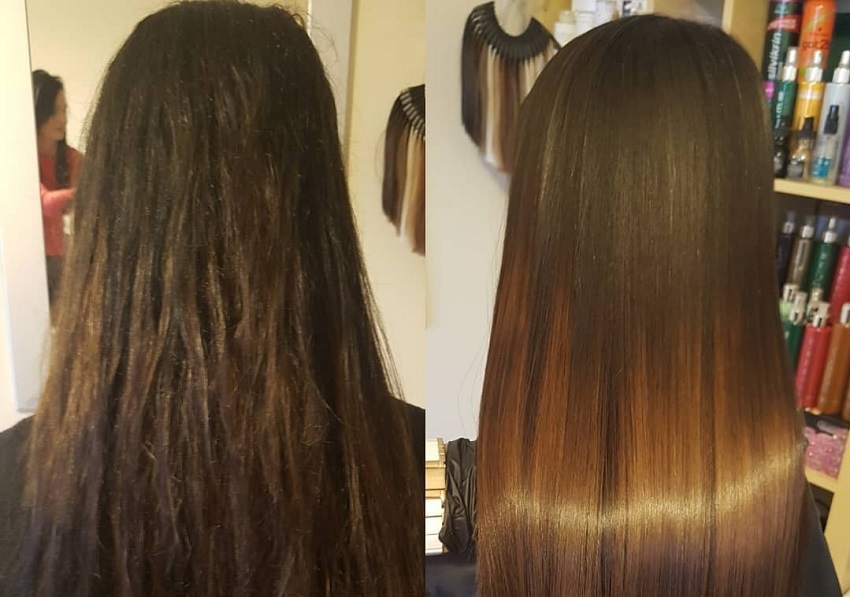One of the most important things you should consider if you want to keep your hair healthy is to use a Keratin treatment. Not only can it make your hair firmer, smoother, and more nutritious, but it is also safer. Depending on the treatment you decide to use, it can even help to eliminate frizzy and damaged hair.
Smoother, Softer, and Shinier
Keratin treatment is a hair care technique that can help you get smoother, softer, and shinier hair. Keratin treatments are made of keratin protein, which is found naturally in the hair and skin. It helps to seal the cuticle and reduce frizz. The effect can last for up to three months.
During a keratin treatment White Plains NY, a hair stylist injects keratin into your hair. The protein makes it smooth and helps to tame flyaways. When accompanied by heat, the keratin seals the cuticle and makes the hair look straight.
Depending on the length of your hair, a keratin treatment may last from two to four hours. After the treatment, you must wait three days before washing your hair. You will also need to use a sulfate-free shampoo and conditioner for this period.
Stronger
Getting a Keratin treatment for your hair is an excellent way to make it stronger and healthier. It’s also a great way to make your hair easier to manage. You’ll enjoy a shiny, smooth head of hair that doesn’t require constant combing. However, you should know that the process comes with risks.
Typically, a keratin treatment takes two to four hours. The length of time will depend on your hair type and the formula used.
After a treatment, you should avoid swimming in salt water or chlorinated pools for at least three days. This can shorten the effectiveness of the treatment.
You should avoid using hair styling products, including mousses, sprays and gels, for a minimum of two weeks after a keratin treatment. Try to use a sulfate-free shampoo, which will help prolong the life of the treatment.
Less Frizzy
Keratin treatment for less curly hair is a process that smooths the cuticle of your hair, eliminating frizz and making it easier to style. Depending on the type of treatment, it can last for three to six months.
The process involves coating the strands of your hair with a keratin protein layer. This prevents your hair from frizzing and leaves it shiny and silky.
It may take up to two hours to get a keratin smoothing treatment done at a salon. You’ll need to wait at least 72 hours after your treatment to wash your hair, so make sure you have plenty of time. During that time, avoid swimming in salt or chlorinated water.
When you shower, keep your hair away from your face. This will help the treatment last longer.
Safer
You may have heard of keratin treatments if you have always dreamed of straight, healthy-looking hair. These products are designed to create fuss-free, smooth, frizz-free hair. They work by injecting keratin into the hair follicle. The treatment then gradually fades away after a few months.
Typically, keratin treatments are performed at a salon. However, you can get them at home. You need to be careful to avoid using too much heat. Before styling your hair with hot tools, you should also use a heat-protectant product.
When considering keratin treatments, be aware that many contain formaldehyde. This chemical is a carcinogen, which can cause health problems if it comes into contact with your skin or eyes.
Formaldehyde Exposure
In the last four years, formaldehyde exposure has harmed people after keratin treatment. A 2011 study found higher-than-advertised formaldehyde levels in 4 different brands of keratin treatments.
The Food and Drug Administration (FDA) has known for over a decade that keratin hair-smoothing treatments release unsafe amounts of formaldehyde. However, the agency has not taken action. This lack of oversight highlights the need for strong federal regulation of the cosmetics industry.
Formaldehyde is a chemical that has been linked to cancer and other injuries. It has also been associated with severe eye and skin irritation.
Several studies have shown that salon workers are at risk for long-term exposure to formaldehyde. The National Institute for Occupational Safety and Health recommends a formaldehyde level of 0.016 ppm over a 10-hour work shift.




